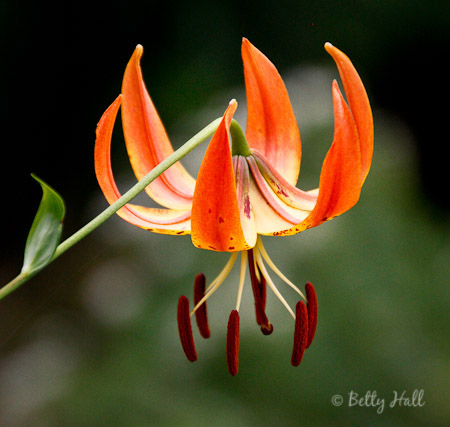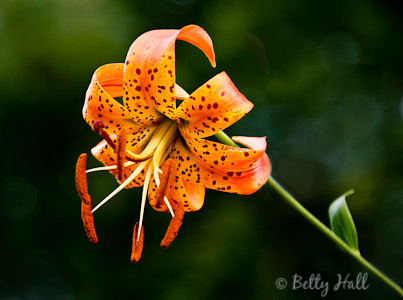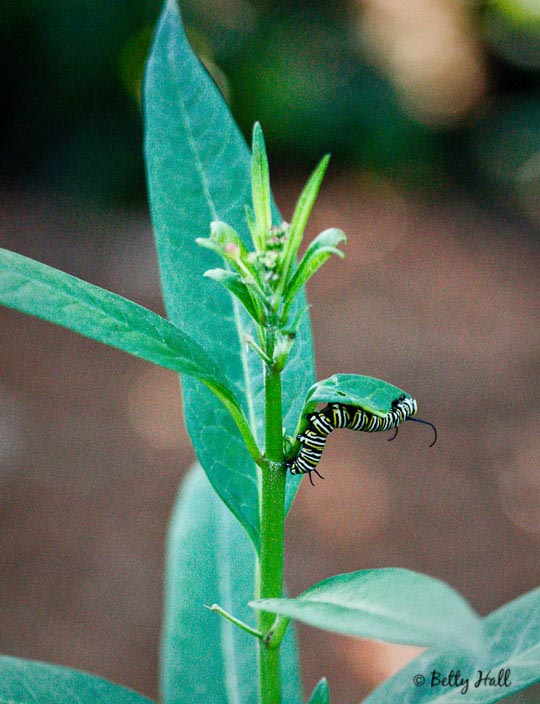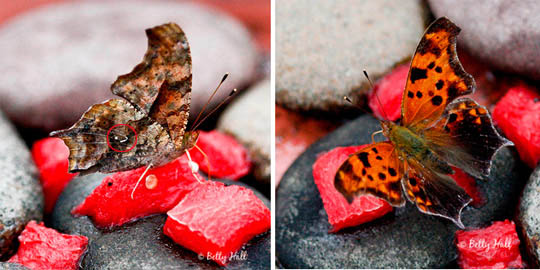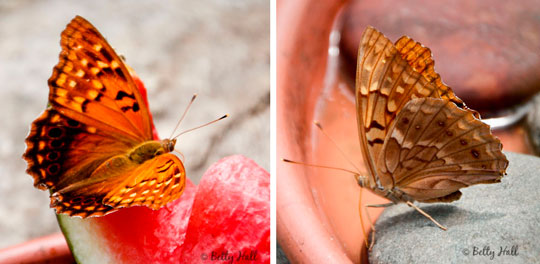It’s easy to get excited about big butterflies such as Monarchs and Swallowtails. It takes more effort to see and appreciate the smaller ones, but I find them just as exciting.
My friend, Connie May, has a keen eye for small things, especially caterpillars, which she often gives to me to photograph and raise. She recently discovered a half-inch Pearl Crescent (Phyciodes tharos) chrysalis while pulling weeds and gave it to me.
The next morning I saw orange and black wing markings showing through the previously opaque chrysalis, and suspected the butterfly would soon emerge.
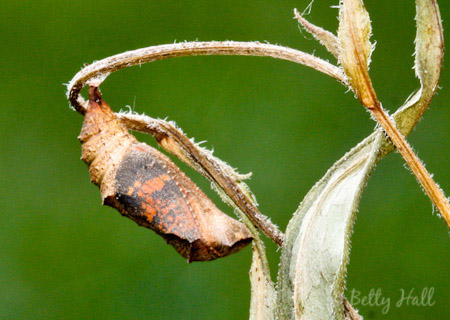
With camera ready, I was watching when “poof” the magic happened and the butterfly appeared.
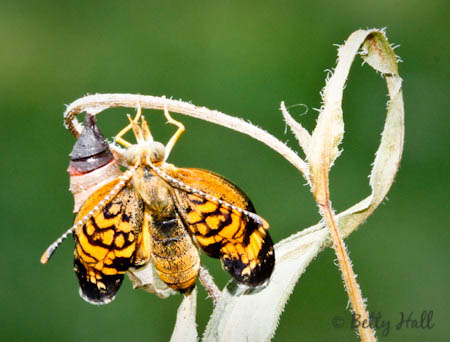
The wings gradually lengthened and after a minute the butterfly became still while the fully formed wings hardened.
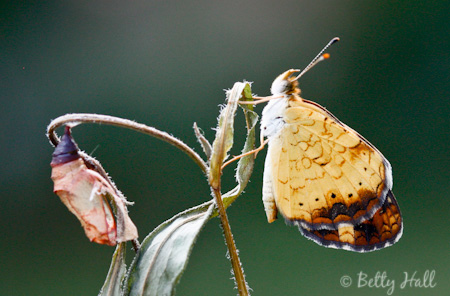
In a couple of hours, it was ready to fly.
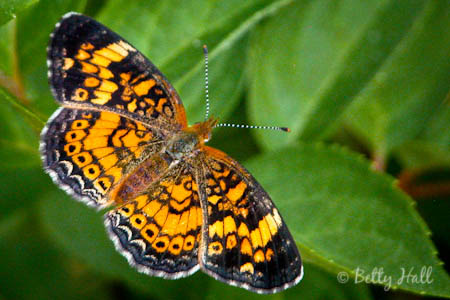 Crescents get their name from the markings near the bottom of the hind wings. At three-fourths inch wide, Pearl Crescents are one of our smaller butterflies. They are also one of the most common in North America.
Crescents get their name from the markings near the bottom of the hind wings. At three-fourths inch wide, Pearl Crescents are one of our smaller butterflies. They are also one of the most common in North America.
A great way to encourage Crescents is to plant native asters. They are the only plants on which Pearl Crescents lay their eggs. As an added benefit, the beautiful aster blossoms are an excellent source of nectar for many fall butterflies.
I feel fortunate that Connie discovered the tiny chrysalis and gave it to me, and that I was able to see it emerge and set it free in the backyard. As to butterflies, large or small, I like them all.

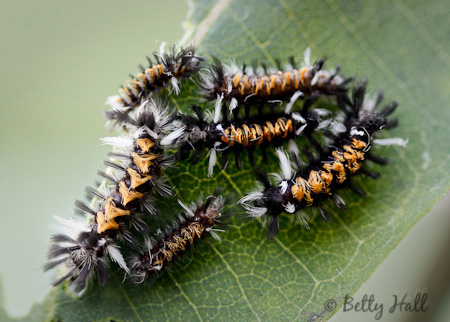
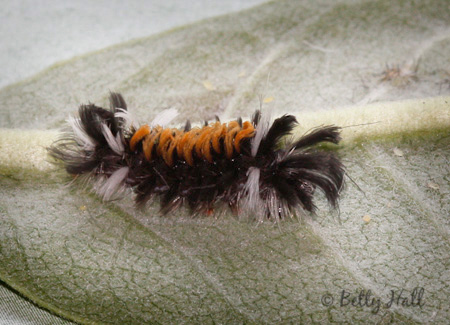 Milkweed Tussock moth eggs are usually laid generously on older Milkweeds while Monarchs generally lay only one or two eggs per plant and prefer younger, more tender leaves.
Milkweed Tussock moth eggs are usually laid generously on older Milkweeds while Monarchs generally lay only one or two eggs per plant and prefer younger, more tender leaves.